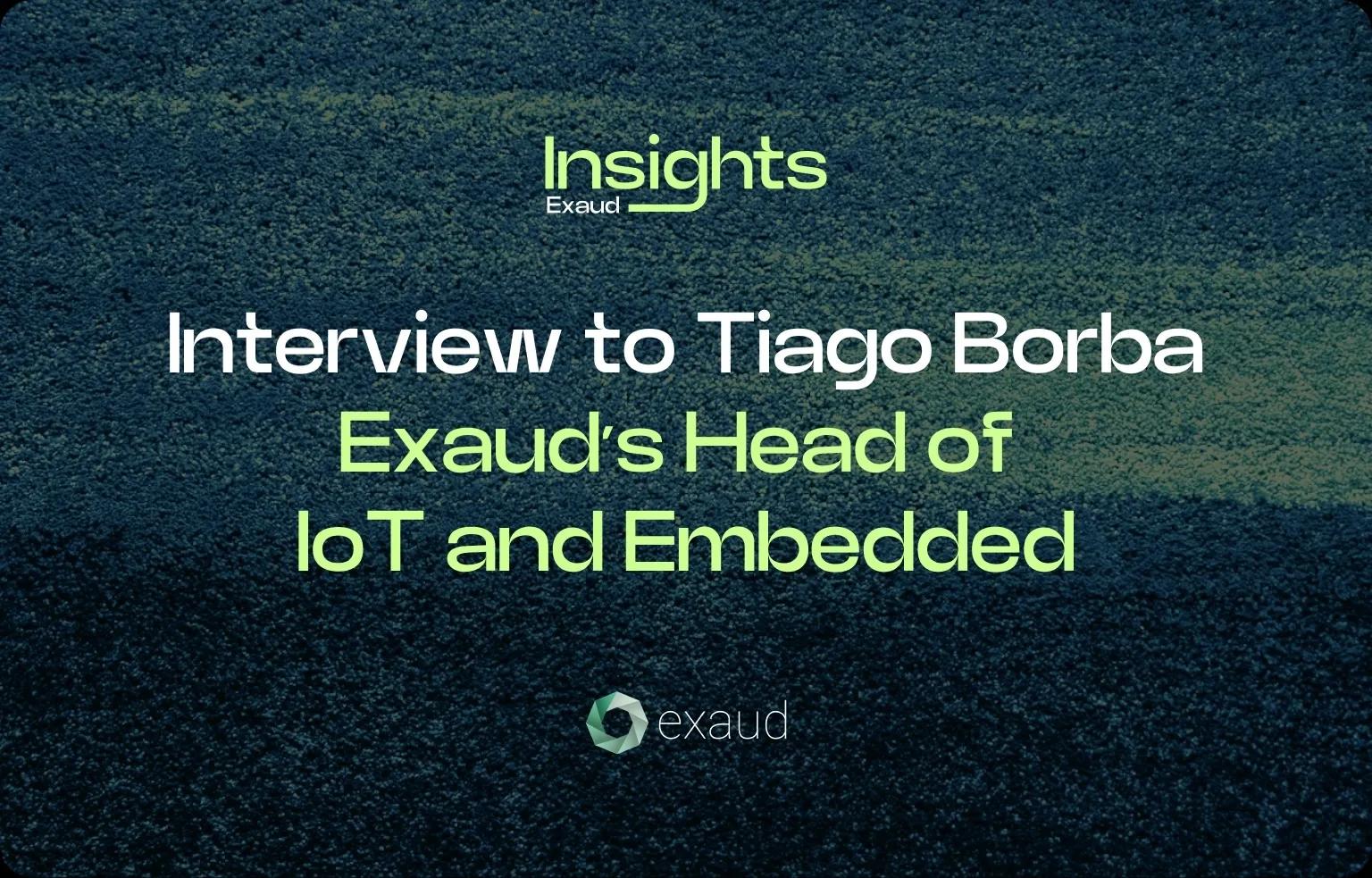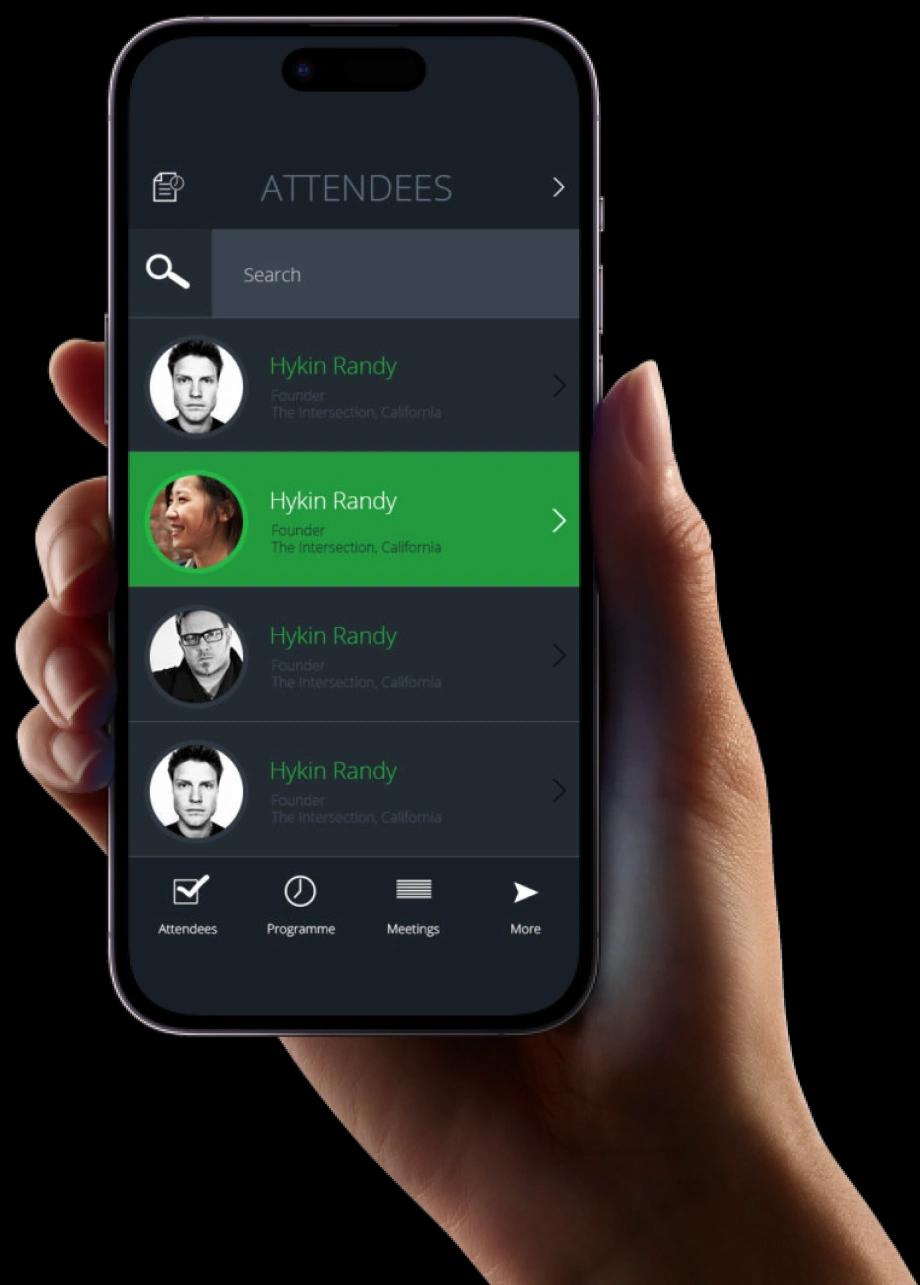Exaud Blog
Blog

Interview to Tiago Borba – Exaud’s Head of IoT and Embedded
Exaud’s Head of IoT and Embedded, discusses how IoT is shaping consumer life, the challenges of device interoperability, and the future of IoT in health, energy, and automotive industries.Posted onby Tiago BorbaFollowing our recent look at the basics of IoT, we’re diving deeper into this exciting field with insights from Tiago Borba, Exaud’s Leader in IoT and Embedded Technologies. In this interview, Tiago discusses how IoT is being used in everyday life and industry, the challenges of connecting diverse devices, and what’s next in this fast-evolving space. From smart homes to innovative health tech, he shares what makes IoT so powerful—and where it’s heading.
Exploring the Current and Future Impact of IoT Technology
1. What are some cool ways people are using IoT technology right now?
It really depends on the type of user. From a typical consumer’s perspective, IoT has become an everyday part of life, integrated into devices that markets and industries push forward. Think smartphones, smart TVs, fridges, and even automated gates. Domotics, or home automation, is one of the biggest consumer-facing applications of IoT today - think of things like security systems, lighting, energy management, and entertainment. As 5G becomes more widespread, the reach of IoT will extend, allowing more powerful networks without requiring massive Wi-Fi setups. This will begin at the industrial level, with manufacturers leveraging 5G’s strengths in factories and office spaces.
For tech enthusiasts or expert users, IoT has advanced further with platforms like Apple’s HomeKit, Samsung SmartThings, Google Home, and Philips Hue. But open-source integration, especially with HomeAssistant, is particularly exciting to me. HomeAssistant serves as a versatile platform compatible with most major IoT brands, allowing users to operate devices from various manufacturers without locking into a specific ecosystem. ESPHome is another innovative platform, using low-cost ESP32 microcontrollers to drive home devices affordably and efficiently, and it’s gaining popularity in the tech community.
The industrial and municipal applications of IoT, including machine-to-machine communications and smart city infrastructure, are also growing rapidly. Over the coming decade, we’re likely to see these developments trickle down to the consumer space, especially as connected vehicles and assisted driving technologies mature.
2. What’s the biggest challenge with making IoT devices work well together?
A major challenge is interoperability among devices from different manufacturers, as illustrated by the variety of integration platforms (e.g., Apple, Samsung, Google, Philips). The solution lies in adopting unified standards or making platforms compatible with each other. This is a long-standing issue in tech (think DVD vs. Blu-Ray) and will likely be decided by market forces. For now, both consumers and companies must choose wisely and advocate for products that “just work” together.
From a developer’s perspective, the challenge is predicting which standards will gain traction. Often, the safest approach is to align with the dominant players in a given market. But at Exaud, we strive to stay as platform-agnostic as possible, giving our clients flexible solutions that can adapt to various standards. This involves carefully planning each project’s technical requirements to meet client needs without over-committing to one specific protocol.
3. How do you make sure IoT devices are safe and protect user data?
Security and privacy are top priorities for every IoT product we develop, from the device itself to the broader network it operates in. Many IoT devices, such as sensors and actuators, handle sensitive data, like home temperature settings or security camera feeds. We prioritize encrypted data transmission, secure connections, and robust controller systems that only connect to the internet when necessary.
Physical security is also crucial, as many devices are accessible by outsiders or guests. Device-level encryption and tamper-resistant technology, like trust chains, help mitigate these risks. Additionally, since many IoT devices rely on crowded radiofrequency spectrums, we select appropriate radio standards to ensure reliability and safety in specific environments.
A substantial part of IoT security also comes down to proper installation and maintenance. We work closely with our clients, particularly system integrators, to establish reliable installation and maintenance protocols. This helps prevent common security vulnerabilities that can arise from poor setup or maintenance practices.
4. Which types of IoT projects do you see most companies approaching Exaud for?
Recently, we’ve collaborated with system integrators on projects in home automation, industrial control systems, and power management for microgeneration. We’ve also worked on infotainment and lighting systems for cars, health and lifestyle monitoring devices, and factory monitoring systems. In one project, we helped develop a system that leverages Big Data and Machine Learning to improve risk assessment and planning in a manufacturing environment.
5. What new IoT trends or devices are you most excited about in the next few years?
I’m particularly interested in how 5G and IoT will intersect in the automotive space, but as a consumer, I’m also eager to see more widespread adoption of open standards. Right now, users often have to choose a specific ecosystem or juggle incompatible devices, and that fragmentation is a barrier. Standardization would lower costs and make IoT more accessible.
In terms of devices, I hope we’ll see more advanced health monitoring tools reach consumers. Available devices measure things like heart rate and blood pressure, but there’s potential for even deeper, more sophisticated health data, such as 24h monitoring of health parameters instead of single-point. This could empower people to monitor their well-being and provide their doctors with accurate, daily health metrics without the need for costly or invasive tests. Similarly, as energy efficiency becomes increasingly important, I envision IoT enabling more precise, context-sensitive control over home energy consumption. These areas—health and energy—are where I believe IoT’s impact will be strongest for consumers in the near future. And I believe this impact will extend to the societal and environmental levels when adopted at a mass scale.
If you're looking to take your IoT projects to the next level, Exaud can help. Our team specializes in developing secure, scalable IoT solutions, including home automation, industrial systems, and data-driven applications, ensuring flawless integration and reliable performance for your business. Check our IoT services here.
Related Posts
Subscribe for Authentic Insights & Updates
We're not here to fill your inbox with generic tech news. Our newsletter delivers genuine insights from our team, along with the latest company updates.